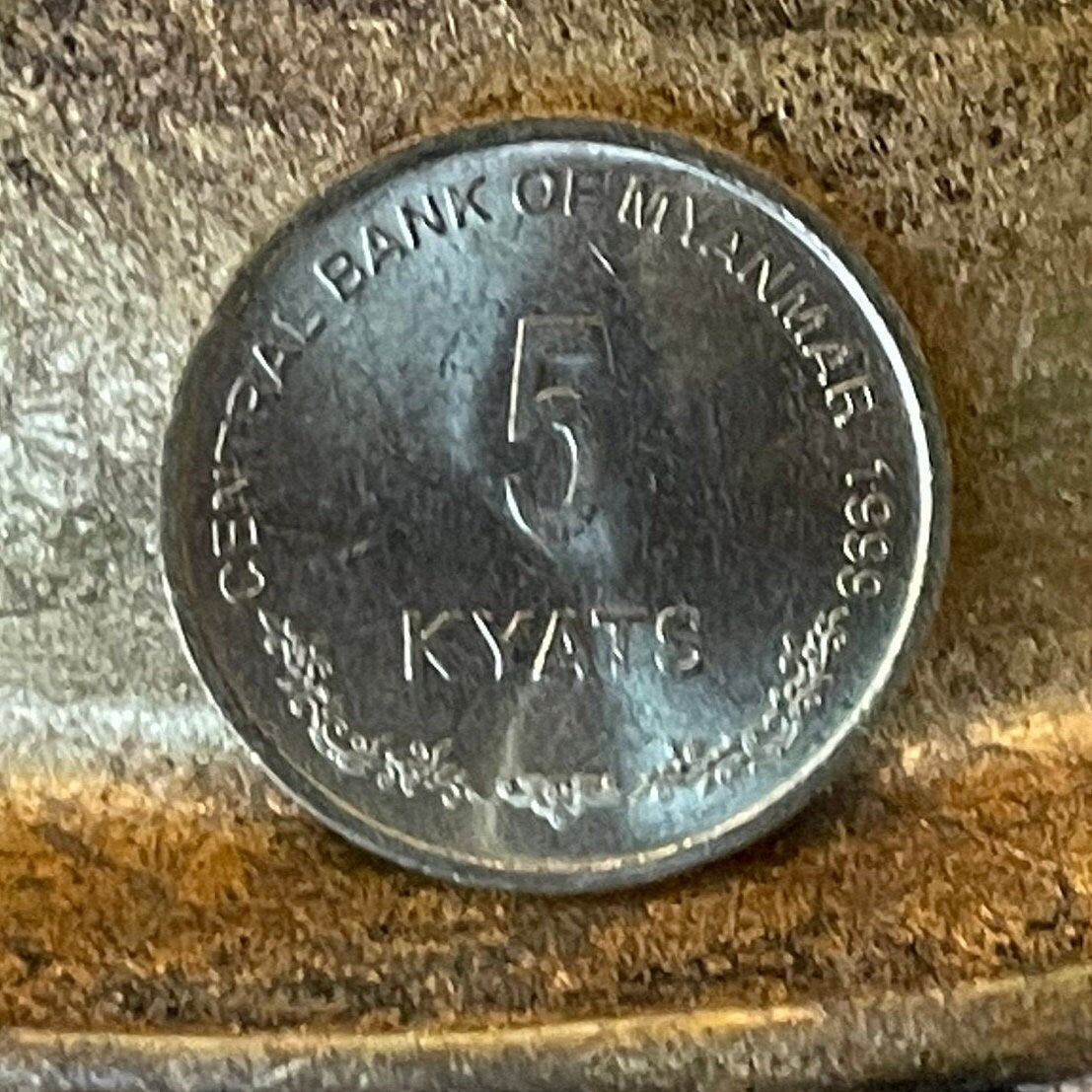elemintalshop
Chinthe Lion Myanmar 5 Kyats Authentic Coin Money for Jewelry and Craft Making (Leogryph)
Chinthe Lion Myanmar 5 Kyats Authentic Coin Money for Jewelry and Craft Making (Leogryph)
Couldn't load pickup availability
Chinthe Leogryph (Lion) Myanmar 5 Kyats Authentic Coin Charm for Jewelry and Craft Making
Obverse:
Chinthe facing left, date right, denomination below
Lettering:
★ မြန်မာနိုင်ငံတော်ဗဟိုဘဏ်၁ ၉၉၉၁ ★
၅ ကျပ်
Translation:
Central Bank of Myanmar 1999
5 Kyats
Reverse:
Denomination, date right
Lettering:
CENTRAL BANK OF MYANMAR 1999
5 KYATS
Features
Issuer Myanmar
Period Union of Myanmar (1988-2011)
Type Standard circulation coin
Year 1999
Value 5 Kyats
5 MMK = 0.0027 USD
Currency Union of Myanmar - Third kyat (1989-date)
Composition Brass
Weight 2.73 g
Diameter 20 mm
Thickness 1.3 mm
Shape Round
Orientation Medal alignment ↑↑
Number N# 6870
References KM# 61, Schön# 32
Wikipedia:
The chinthe is a highly stylized leogryph (lion-like creature) commonly depicted in Burmese iconography and Myanmar architecture, especially as a pair of guardians flanking the entrances of Buddhist pagodas and kyaung (or Buddhist monasteries). The chinthe is featured prominently on most paper denominations of the Burmese kyat. A related creature, the manussiha, is also commonly depicted in Myanmar. In Burmese, chinthe is synonymous with the Burmese word for "lion."
The chinthe is related to other leogryphs in the Asian region, including the sing (สิงห์) of Thailand, Cambodia, Laos, and the simha (සිංහ) of Sri Lanka, where it is featured prominently on the Sri Lankan rupee. It is also related to East Asian leogryphs, such as the guardian lions of China, komainu of Japan, shisa of Okinawa and Snow Lion of Tibet.
The story of why chinthes guard the entrances of pagodas and temples is given as such from the Mahavamsa:
The princess Suppadevi of Vanga Kingdom (Present day Bengal) had a son named Sinhabahu through her marriage to a lion, but later abandoned the lion who then became enraged and set out on a road of terror throughout the lands. The son then went out to slay this terrorizing lion. The son came back home to his mother stating he slew the lion, and then found out that he killed his own father. The son later constructed a statue of the lion as a guardian of a temple to atone for his sin.
The chinthe is symbolically used as an element of Burmese iconography on many revered objects, including the palin, the Burmese royal thrones and Burmese bells. Predating the use of coins for money, brass weights cast in the shape of mythical beasts like the chinthe were commonly used to measure standard quantities of staple items. In the Burmese zodiac, the chinthe (lion) sign is representative of Tuesday-born individuals.
Share









Fabulous coin. Fast delivery. Well packed.
I love this addition to my collection!
High quality coin to add to my collection.
nice quality coin@ very good shine
The item is good quality, and I will recommend.








